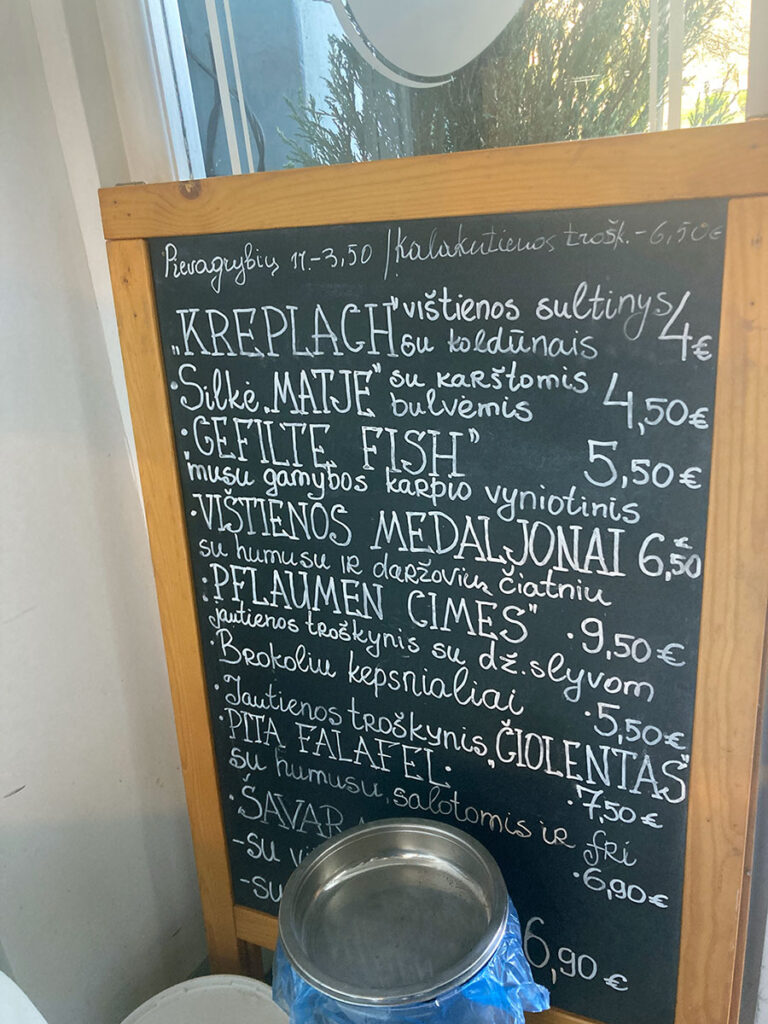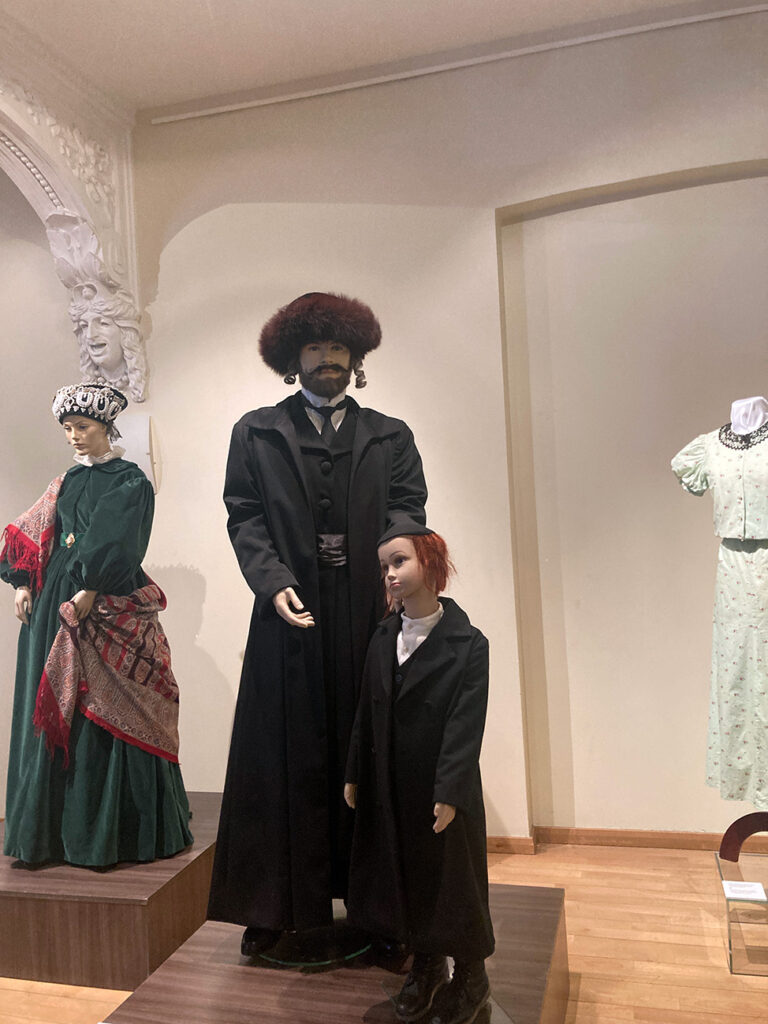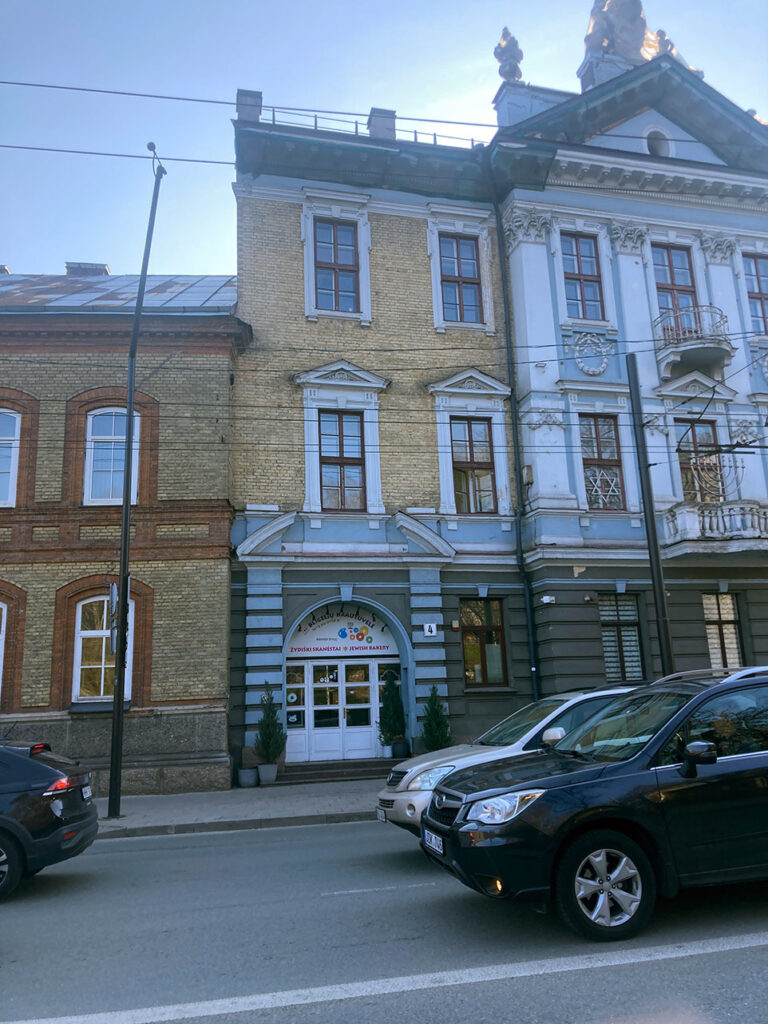By Desrae Saacks
Ponary (Paneriai) forest is a short drive from Vilna (Vilnius), the capital city of Lithuania.
It is quiet – very quiet. There is an absence of forest sounds – no rustling of bushes or insect calls that would usually be part of a place like this.
This seemingly peaceful place belies the violence that lies buried beneath its surface. In fact, Ponary forest is the largest WWII killing site in Lithuania, concealing and bearing witness to the brutal murder of 100 000 men, women and children — 70 000 of whom were killed simply because they were Jewish. It is deathly quiet.
At the Ninth Fort, four miles from the centre of Kaunas, a young father takes a late afternoon mid-week break, enjoying the spring weather while his child whizzes about on a tricycle. Buried beneath the grassy park that overlooks the city are the remains of 50 000 souls — victims of the Nazis and their Lithuanian collaborators.
When I accepted an invitation from the Lithuanian government’s department of Foreign Affairs to visit the country in April of this year, I understood this to be a PR exercise. I chose to embrace the opportunity to see and experience the place where generations of my family had made a life for themselves; and to prepare for the trip by reading up on the history of the country, and of the Jewish community that had thrived there until 1941, when almost all of them were murdered.
Over the course of a week, I visited the beautiful cities of Vilnius and Kaunas, and the shtetls that my family came from. I met with some of the very few local Jews — descendents of survivors who returned to the country after the Second World War, to search (usually in vain) for their relatives. I visited the graveyard where the Vilna Gaon is buried, and other graveyards adjacent to smaller towns, where only a few markers remain. I walked around the once-bustling towns that are now empty of Jews. Some old wooden houses remain on the central market square, sometimes also a shul — evidence of the commercial, social and religious life lived by generations of Jews since the 1600s. So little remains, and the absence is palpable.
I also met with various representatives of government, and of both state- and privately-sponsored projects that have been implemented since independence, aimed at acknowledging Jewish history in Lithuania. I learned about the inclusion of Holocaust studies in the school curriculum, education programmes and tolerance centres working to educate both teachers and learners; a revamp of the Vilna Gaon Jewish Museum, memorial days and events throughout the country, monuments, memorials, and a financial compensation programme.
While it was clear that Lithuania is at pains to refute any notion of antisemitism, and to confront history, there was a noticeable resistance to acknowledging local complicity in the atrocities meted out to the Jewish population during the Nazi occupation. Instead we were offered counter-narratives — stories of, and monuments to, local rescuers of Jews; and accounts of the terrible suffering of the Lithuanian people during the brutal Soviet period. While it is important to understand and acknowledge the Lithuanians’ own trauma during this time, these accounts were often offered as a defensive attempt to ‘balance’ the narrative in what is known as the ‘Double genocide theory’ i.e. equating Jewish suffering under the Nazis with Lithuanian suffering under the Soviets.
Of particular concern are the public monuments, dedicated to Jonas Noreika, Kazys Škirpa and other members of the Lithuanian Activist Front. These men are considered national heroes for their fight for independence against the Soviets, but are also known to have been participants in the mass murder of Jews in Lithuania.
One government minister, when challenged on this issue, confessed to feeling ‘under attack’ and offered a series of excuses for Lithuania’s inaction in addressing this problematic situation. Dismissing a huge body of anecdotal and physical evidence, he said that there is “no historical proof of Noreika’s (and others’) crimes”, and that “the Lithuanian government would only act on evidence arising from invesigations currently being undertaken by ‘their historians’.”
It was also explained that the Lithuanian public had not had an opportunity to learn about the Shoah, as the Soviets distorted the history by counting Jewish victims only as Soviet citizens, erasing the Jewish thread of the narrative. While this is true, there is still an abundance of first-hand memory of the atrocities — from locals who witnessed the mass killings, collaborators who carried them out, to the handful of survivors. One diplomat acknowledged that the monuments should be taken down, but offered that the Lithuanian public is not ready to lose their heroes, and that an education campaign needs to precede this action.
I left Lithuania with a renewed sense of pride in the amazing community of which I am a descendant, a deep sorrow for the horrific trauma suffered by my people, and a sadness and frustration at the denial of culpability that constitutes a deep insult to all martyred and surviving Litvaks.
To quote Efraim Zuroff, co-author with Ruta Vanagaite of Our People, Recovering Lithuania’s Hidden Holocaust, “The crimes committed against the Jews (local and foreign) were in reality a Lithuanian tragedy, one that will continue to cast its dark shadow over their beautiful country until the horrors are finally honestly confronted and internalized. Only when Lithuanians understand that, despite differences of religion, politics, traditions, and lifestyle, my people were actually also their people, will the true healing process have any chance of success. And that is my fervent hope and prayer.”
Historical context
When Nazi Germany occupied Lithuania in 1941, there was a population of 220 000 Jews (10% of the Lithuanian population) spread over roughly 200 communities across the country. Between June and December 1941, most were shot to death by Lithuanian collaborators. By the end of the war over 95% of the 600-year-old Jewish community of Lithuania had been obliterated.
In 1990, Lithuania emerged from a harsh and traumatic Soviet occupation that lasted from 1940 until 1991 (except for a three-and-a-half-year period of Nazi military occupation during the war). The Soviet years are remembered with much pain and bitterness, and for Lithuanians, this is their trauma.
Ultra-nationalistic and virulently antisemitic resistance groups that fought against the Soviets for Lithuanian independence saw the Nazis as liberators from the hated Soviets. In the period after the war, key members of these organisations have been celebrated as national heroes for their martyrdom fighting the primary enemy of Lithuanian nationalistic aspiration i.e. Soviet Russia; while their collaboration with the Nazis and their active participation in the mass murder of the Jewish population has been ignored.




• Published in the June 2023 issue – Click here to start reading.
• To advertise in the Cape Jewish Chronicle and on this website – kindly contact Lynette Roodt on 021 464 6736 or email advertising@ctjc.co.za. For more information and advertising rate card click here.
• Sign up for our newsletter and never miss another issue.
• Please support the Cape Jewish Chronicle with a voluntary Subscription for 2023. For payment info click here.
• Visit our Portal to the Jewish Community to see a list of all the Jewish organisations in Cape Town with links to their websites.
Follow the Cape Jewish Chronicle: Facebook | Instagram | Twitter | LinkedIn










